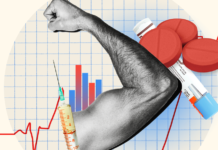
Introduction to Diet Sensor Technology
In today’s health-conscious society, the demand for personalized dietary monitoring has surged, leading to the development of innovative tools like diet sensor devices. These devices are designed to revolutionize how individuals track their nutritional intake, offering a modern solution to age-old dietary challenges. A diet sensor device is a compact, portable gadget that utilizes advanced technology to analyze the composition of food, providing real-time insights into its nutritional content.
The significance of diet sensor devices lies in their ability to offer precise and individualized dietary information. Traditional methods of tracking food intake often rely on estimation and manual entry, which can be time-consuming and prone to errors. In contrast, diet sensor technology provides immediate and accurate data, helping users make informed dietary choices. This is particularly beneficial for those managing specific health conditions, such as diabetes or obesity, where accurate nutritional tracking is essential.
At the core of diet sensor technology is its use of spectroscopic methods to analyze food. These devices typically use near-infrared (NIR) spectroscopy, a technique that measures the absorption of light by food molecules. By shining a light on the food and analyzing the reflected wavelengths, the device can determine the food’s chemical composition, including macronutrients like carbohydrates, proteins, and fats, as well as micronutrients and other compounds. This process is fast, non-invasive, and requires minimal user effort, making it an ideal tool for daily use.
Overall, the introduction of diet sensor devices marks a significant advancement in the field of nutrition and health. By leveraging advanced technology to provide personalized dietary insights, these devices empower individuals to take control of their nutritional intake, promote healthier eating habits, and ultimately improve their overall well-being. As the technology continues to evolve, diet sensor devices are likely to become an integral part of modern health and nutrition management.
Core Components and Functionality
The diet sensor device is a sophisticated piece of technology designed to assist users in monitoring their dietary intake with precision. At the heart of this device is a compact and highly sensitive sensor, which is typically small enough to fit in the palm of your hand, ensuring portability and convenience. The sensor operates by scanning the food placed before it, utilizing advanced spectroscopic techniques to analyze the molecular composition of the food item.
Accompanying the sensor is a robust software component, usually in the form of a mobile application or online platform. This software is integral to the overall functionality of the device. Once the sensor scans the food, it transmits the collected data to the software via Bluetooth or another wireless communication method. The data encompasses a variety of nutritional information, including calorie count, macronutrients (proteins, fats, and carbohydrates), and micronutrients (vitamins and minerals).
The mobile application or platform processes this data using complex algorithms and databases of food compositions. It then translates the raw data into user-friendly information, providing a detailed breakdown of the nutritional content of the scanned food item. This information is presented in a way that is easy to understand, enabling users to make informed dietary choices. Additionally, the software often includes features such as logging daily intake, setting nutritional goals, and tracking progress over time.
Another essential aspect of the diet sensor device is its ability to offer personalized recommendations. By analyzing the user’s dietary habits and nutritional needs, the software can suggest dietary adjustments and improvements. This is particularly beneficial for individuals with specific dietary restrictions or health goals, such as weight loss, muscle gain, or managing conditions like diabetes.
Overall, the diet sensor device integrates advanced hardware with intelligent software, providing a comprehensive tool for dietary monitoring and management. Its ease of use, portability, and detailed nutritional analysis make it an invaluable asset for anyone looking to take control of their dietary habits.
The Science Behind Food Scanning
The diet sensor device operates on advanced scientific principles to deliver precise nutritional analysis of food items. At the core of this technology is spectroscopy, a method that involves analyzing how light interacts with the molecules in food. When the device scans an item, it emits a specific wavelength of light that penetrates the food and is then reflected back to the sensor. This reflected light carries unique spectral signatures that correspond to different nutrients and compounds present in the food.
By employing algorithms and databases that interpret these spectral signatures, the device can accurately determine the nutritional content, including macronutrients like carbohydrates, proteins, and fats, as well as micronutrients such as vitamins and minerals. The diet sensor device is capable of distinguishing between various types of foods and their specific nutritional profiles by comparing the spectral data against a vast library of known food signatures.
While the technology is remarkably advanced, it is important to note the potential limitations and sources of error. Factors such as the homogeneity of the food sample, the presence of mixed ingredients, and the condition of the food (e.g., cooked versus raw) can affect the accuracy of the readings. However, continual advancements in the algorithms and hardware used in these devices are progressively enhancing their reliability and precision.
Moreover, the diet sensor device incorporates machine learning techniques to improve its accuracy over time. By collecting data from numerous scans, the device can refine its analysis and offer more precise nutritional information. This adaptive learning capability ensures that the device remains effective across a wide range of food items and preparation methods.
In essence, the diet sensor device leverages cutting-edge scientific methods to provide users with detailed nutritional insights. Through the integration of spectroscopy and machine learning, it is capable of offering reliable and accurate measurements, thereby empowering individuals to make informed dietary choices.
Benefits and Practical Applications
The diet sensor device offers a range of significant benefits, making it an invaluable tool for those committed to maintaining a healthy lifestyle. One of the primary advantages of using a diet sensor device is its ability to assist with weight management. By providing accurate and immediate nutritional information about the foods consumed, the device allows users to make informed dietary choices. This real-time data can help individuals stay within their caloric limits and ensure they are getting the right balance of nutrients, which is crucial for effective weight management.
Another key benefit is the aid it provides in dietary planning. The diet sensor device can track and analyze eating patterns over time, offering insights into nutritional habits. With this information, users can identify areas for improvement and adjust their diet accordingly. For instance, someone aiming to increase their protein intake or reduce sugar consumption can use the device to monitor their progress and make necessary adjustments to their meal plans.
Beyond weight management and dietary planning, the diet sensor device contributes to overall health improvement. By consistently monitoring nutritional intake, users can prevent deficiencies and excesses that might lead to health issues. For example, individuals with diabetes can use the device to manage their carbohydrate intake more effectively, thereby helping to maintain stable blood sugar levels.
Real-world examples and testimonials highlight the practical applications of this technology. Users have reported significant health improvements and greater ease in achieving their dietary goals. One user noted that the device helped them reduce their daily sodium intake, leading to better blood pressure control. Another user praised the device for its role in helping them understand portion sizes, which contributed to their successful weight loss journey.
Looking ahead, future developments in diet sensor technology promise to enhance its utility even further. Potential enhancements could include more advanced algorithms for nutrient analysis, integration with other health monitoring devices, and personalized dietary recommendations based on genetic data. These advancements have the potential to make maintaining a healthy lifestyle even more accessible and effective for a broader audience.
























